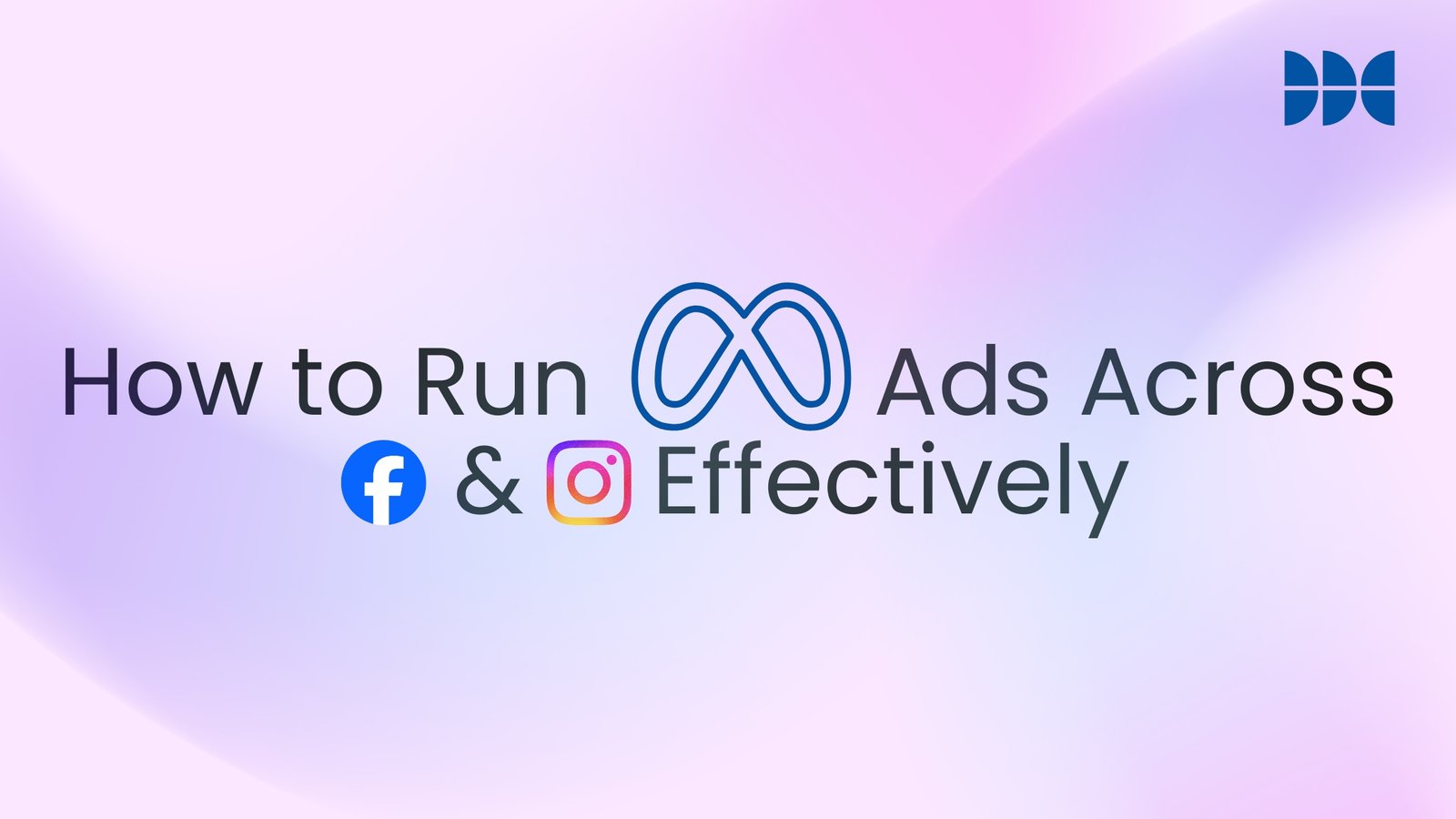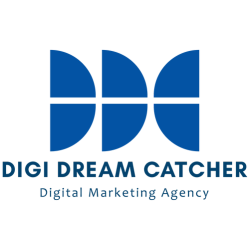
Every day, billions of people scroll through Facebook and Instagram — two of the most influential platforms in the digital advertising world. Whether it’s a teenager watching Instagram Reels, a professional networking in Facebook Groups, or a parent shopping from an in-app ad, Meta has become the digital stage where businesses connect with audiences.
Yet, despite the scale, most advertisers still fail to unlock Meta Ads’ true potential. They either waste money on irrelevant clicks, fail to track conversions accurately, or struggle to scale campaigns profitably.
The good news? Running effective Meta Ads across Facebook and Instagram is not rocket science. With the right setup, strategy, and optimization, businesses of any size can generate consistent leads, sales, and brand awareness.
This comprehensive guide will break down exactly how to run Meta Ads across Facebook and Instagram effectively, covering everything from campaign goals and tracking to creative strategies, automation, testing, and real-world case studies.
Setting the Foundation – Define Your Campaign Goals
One of the most common mistakes in digital advertising is diving into ad creation without defining clear objectives. Meta Ads are powerful, but their effectiveness depends on alignment between your business goals and campaign objectives.
Why Goals Matter
Imagine running ads for an e-commerce store without clarifying whether you want more traffic, more purchases, or more brand visibility. Each goal requires different targeting, bidding, and creative strategies.
Meta simplifies this with campaign objectives, categorized into:
Awareness: Brand awareness, reach.
Consideration: Traffic, engagement, video views, lead generation.
Conversion: Sales, catalog ads, app installs.
Example:
A local restaurant may focus on reach + engagement campaigns to attract nearby customers.
A D2C fashion brand might prioritize conversions with catalog ads.
A SaaS startup could run lead generation campaigns with in-app forms to build a sales pipeline.
Wedding Photographers & Videographerscan focus on selling their services running paid ad campaigns of their past work.
Always start with a clear end goal in mind. Your campaign objective should directly support your overall business KPI, whether that’s ROAS, CPA, CTR, or lead volume.
Essential Setup – Pixel, Conversions API & Tracking
Even the best ads fail without accurate tracking. With privacy changes like Apple’s iOS 14 update, relying only on the Meta Pixel isn’t enough anymore.
Step 1: Install the Meta Pixel
Add the Pixel to your website to track visitor behavior.
Measure actions like purchases, sign-ups, or cart additions.
Step 2: Implement the Conversions API (CAPI)
Sends server-side data directly to Meta, improving event match rates.
Helps recover lost attribution from privacy restrictions.
Step 3: Verify Your Domain & Configure Events
Use Aggregated Event Measurement to rank and prioritize tracked events.
Ensure Meta can attribute conversions correctly.
Pro Tip: Businesses that use Pixel + CAPI together often see a 15–20% improvement in reported conversions compared to Pixel alone.
Choosing the Right Campaign Type
Selecting the wrong campaign type is like bringing a knife to a gunfight.
Awareness Campaigns
Ideal for new businesses or product launches.
Focus on reach and impressions to build brand recall.
Consideration Campaigns
Best for driving traffic, video views, or engagement.
Example: A fitness coach running video ads for free workout tips.
Conversion Campaigns
Tailored for sales, sign-ups, or app installs.
Example: An e-commerce brand running dynamic product ads showing users the exact items they viewed.
If your end goal is revenue, don’t stop at traffic. Move quickly to conversion campaigns once you’ve warmed up your audience.
Audience Targeting – From Broad to Precision
Targeting is where most advertisers overcomplicate things. In 2025, Meta’s algorithm thrives on data-rich, broad targeting, and penalizes overly narrow filters.
Audience Types to Use:
Broad Audiences: Let Meta’s machine learning find the best people.
Custom Audiences: Website visitors, email lists, app users.
Lookalike Audiences (LALs): High-quality seed audiences → scaled reach.
Retargeting: People who viewed products, added to cart, or engaged with content.
Example Strategy:
Prospecting: Run broad ads or 1% lookalikes.
Retargeting: Run dynamic product ads for cart abandoners.
Loyalty: Run ads to upsell or cross-sell existing buyers.
Pro Tip: Uploading first-party customer data (emails, phone numbers, CRM exports) dramatically improves Meta’s ability to match and target effectively.
Creative Strategy – Winning Ads for Facebook & Instagram
Even with perfect targeting, bad creatives kill campaigns. Today, success on Facebook & Instagram means embracing video-first content.
Best Practices for Creatives
Use Vertical Video (9:16) to fit Stories & Reels.
Hook within 3 seconds — users scroll fast.
Design for Sound-Off — captions, bold text overlays.
Strong CTA — “Shop Now,” “Sign Up Today,” “Download Free Guide.”
What Works in 2025:
Reels ads: Quick, authentic, and native-looking.
UGC-style content: Ads that feel like organic posts.
Carousel ads: Great for showcasing product ranges.
Dynamic creatives: Let Meta auto-test multiple variations.
Example: A skincare brand used UGC Reels with testimonials → reduced CPA by 30% vs polished studio ads.
Automation & Optimization – Let Meta Work for You
Manual micro-management is out. Meta has invested heavily in automation tools like Advantage+.
Advantage+ Shopping Campaigns
Automatically tests audiences, creatives, and placements.
Works well for e-commerce brands scaling fast.
Campaign Budget Optimization (CBO)
Distributes budget across ad sets automatically.
Reduces wasted spend on underperformers.
When to Use Automation
Great for scaling once you’ve validated product-market fit.
Pair automation with manual testing in the early stages.
Pro Tip: Advertisers report up to 20–30% lower CPAs using Advantage+ compared to traditional ad sets.
Testing, Measuring & Scaling
Running ads without testing is like flying blind.
A/B Testing Framework
Test one variable at a time: headline, creative, audience.
Run tests for at least 7 days to avoid premature conclusions.
Key Metrics to Track
CTR (Click-Through Rate) → Are people engaging?
CPC (Cost Per Click) → How efficient is traffic?
CPA (Cost Per Action) → What’s your true cost per lead/sale?
ROAS (Return on Ad Spend) → Ultimate profitability measure.
Scaling Tips
Increase budget by 20–30% every 3–4 days to avoid resetting the learning phase.
Duplicate winning ad sets with higher budgets to accelerate scaling.
Case Studies & Real-World Examples
Case Study 1: E-commerce Brand Using Reels
A fashion retailer integrated UGC-style Reels ads into its funnel. Result:
45% higher engagement.
28% lower CPA vs static ads.
Case Study 2: Local Business with Geo-Targeting
A restaurant chain ran reach campaigns targeted within a 10km radius. Result:
3x increase in reservations.
50% more brand searches on Google.
Case Study 3: SaaS Lead Gen with CAPI
A B2B SaaS company implemented Pixel + CAPI to improve conversion tracking. Result:
Reported leads increased by 22%.
More accurate ROAS measurement.
Conclusion: Key Takeaways & Next Steps
Meta Ads on Facebook and Instagram remain one of the most effective ways to drive growth in 2025, but success requires:
Clear objectives aligned with business KPIs.
Robust tracking using Pixel + Conversions API.
Creative-first strategy, prioritizing Reels and authentic content.
Smart audience use, with broad prospecting and precise retargeting.
Automation tools like Advantage+ for scaling.
Relentless testing & optimization.
Running Meta Ads effectively is a balance of art (creatives, storytelling) and science (data, testing, optimization). Master both, and you’ll build campaigns that not only reach millions but also convert profitably.
Next Step: Ready to maximize your Facebook & Instagram ad performance? Start testing these strategies today — or partner with Digi Dream Catcher to scale your business faster and achieve measurable results.
FAQ
Most frequent questions and answers
Meta Ads are advertisements run across Meta-owned platforms, including Facebook and Instagram. They allow businesses to target specific audiences, run various campaign objectives, and track performance to drive awareness, engagement, leads, or sales.
To create a campaign, log in to Meta Ads Manager, select your campaign objective (awareness, consideration, conversion), define your audience, set budget & schedule, design creatives, and launch. Installing the Meta Pixel and enabling Conversions API ensures accurate tracking.
Start with broad targeting to let Meta’s algorithm optimize reach, then layer in:
Custom Audiences: website visitors, email subscribers, app users.
Lookalike Audiences: people similar to your best customers.
Retargeting: people who interacted with your content or added products to the cart.
Short-form vertical videos (Reels) generally perform best, followed by carousel ads and single-image ads. Reels are native, engaging, and optimized for mobile-first consumption. UGC-style content with captions and strong CTAs tends to outperform highly polished studio ads.
Costs vary based on audience, industry, bidding strategy, and competition. Average CPC (Cost Per Click) ranges from $0.50–$2.00 or 90 – 150 INR for Facebook/Instagram, while CPA depends on your product and funnel. Start with a small budget to test campaigns and scale gradually. Agency’s will charge you additionally for Ad Management.
Digi Dream Catcher provides expert guidance on setting up, optimizing, and scaling Facebook & Instagram ads. They offer personalized strategies, creative optimization, audience targeting, and performance tracking to maximize ROI.




